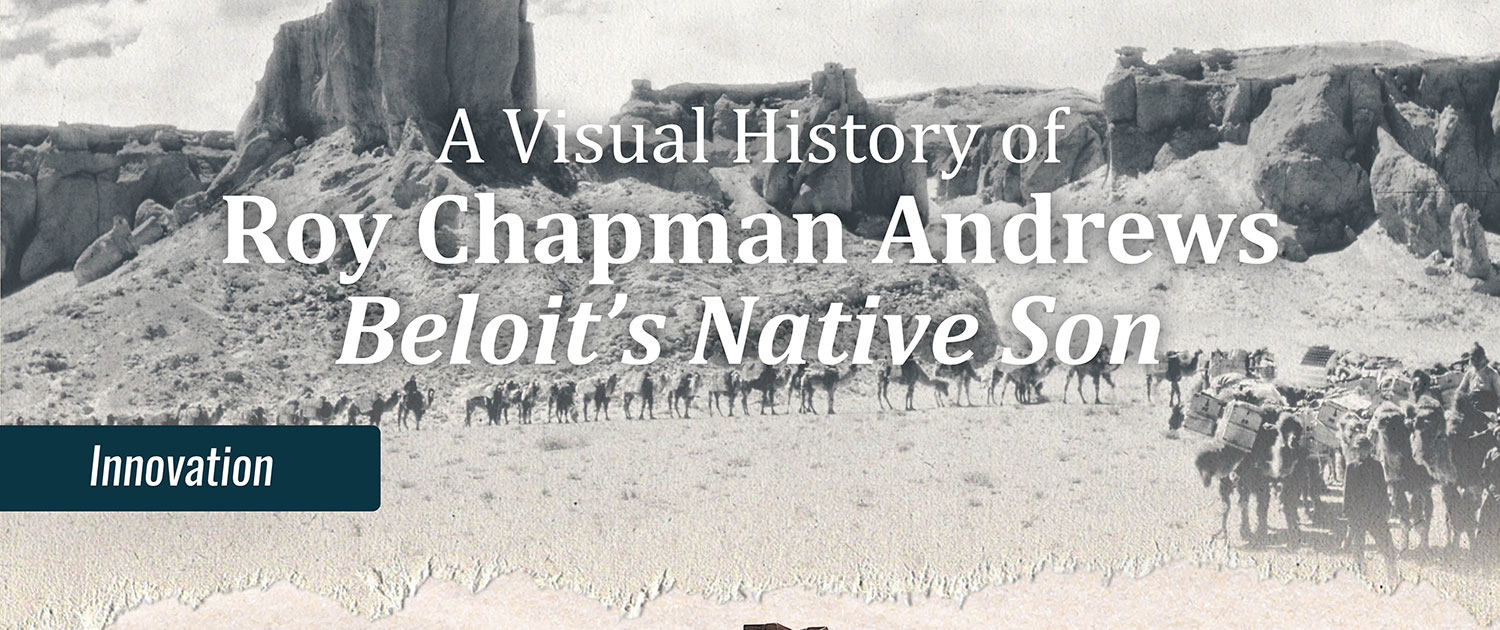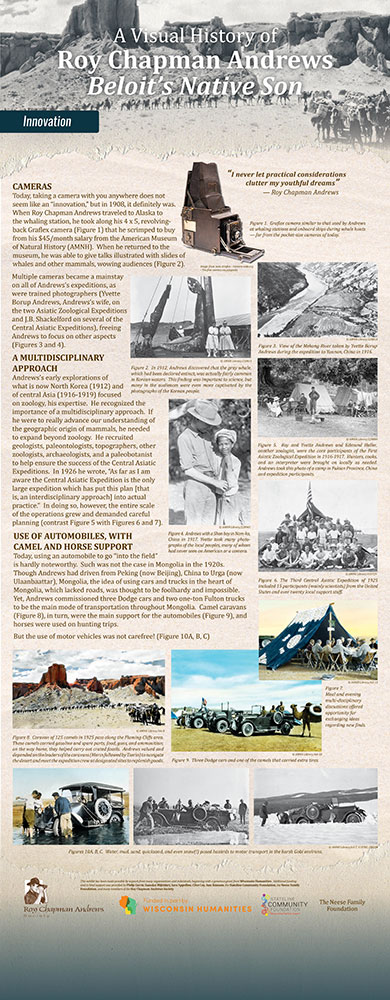Innovation
“I never let practical considerations clutter my youthful dreams”
~Roy Chapman Andrews
Cameras
Today, taking a camera with you anywhere does not seem like an “innovation,” but in 1908, it definitely was. When Roy Chapman Andrews traveled to Alaska to the whaling station, he took along his 4×5, revolving-back Graflex camera (Figure 1) that he scrimped to buy from his $45/month salary from the American Museum of Natural History (AMNH). When he returned to the museum, he was able to give talks illustrated with slides of whales and other mammals, wowing audiences (Figure 2).
Multiple cameras became a mainstay on all of Andrews’s expeditions, as were trained photographers (Yvette Borup Andrews, Andrews wife, on the two Asiatic Zoological Expeditions and J.B. Shackelford on several of the Central Asiatic Expeditions), freeing Andrews to focus on other aspects (Figures 3 and 4).
A Multidisciplinary Approach
Andrews’s early explorations of what is now North Korea (1912) and of central Asia (1916-1919) focused on zoology, his expertise. He recognized the importance of a multidisciplinary approach. If he were to really advance our understanding of the geographic origin of mammals, he needed to expand beyond zoology. He recruited geologists, archaeologists, and a paleobotanist to help ensure the success of the Central Asiatic Expeditions. In 1926 he wrote, “As far as I am aware the Central Asiatic Expedition is the only large expedition which has put this plan [that is, an interdisciplinary approach] into actual practice.” In doing so, however, the entire scale of the operations grew and demanded careful planning (contrast Figure 5 with Figures 6 and 7).
Use of Automobiles, with Camel and Horse Support
Today, using an automobile to go “into the field” is hardly noteworthy. Such was not the case in Mongolia in the 1920s. Though Andrews had driven from Peking (now Beijing), China to Urga (now Ulaanbaattar), Mongolia, the idea of using cars and trucks in the heart of Mongolia, which lacked roads, was thought to be foolhardy and impossible. Yet, Andrews commissioned three Dodge cars and two one-ton Fulton trucks to be the main mode of transportation throughout Mongolia. Camel caravans (Figure 8), in turn, were the main support for the automobiles (Figure 9), and horses were used on hunting trips.
But the use of motor vehicles was not carefree! (Figure 10A, B, C)


